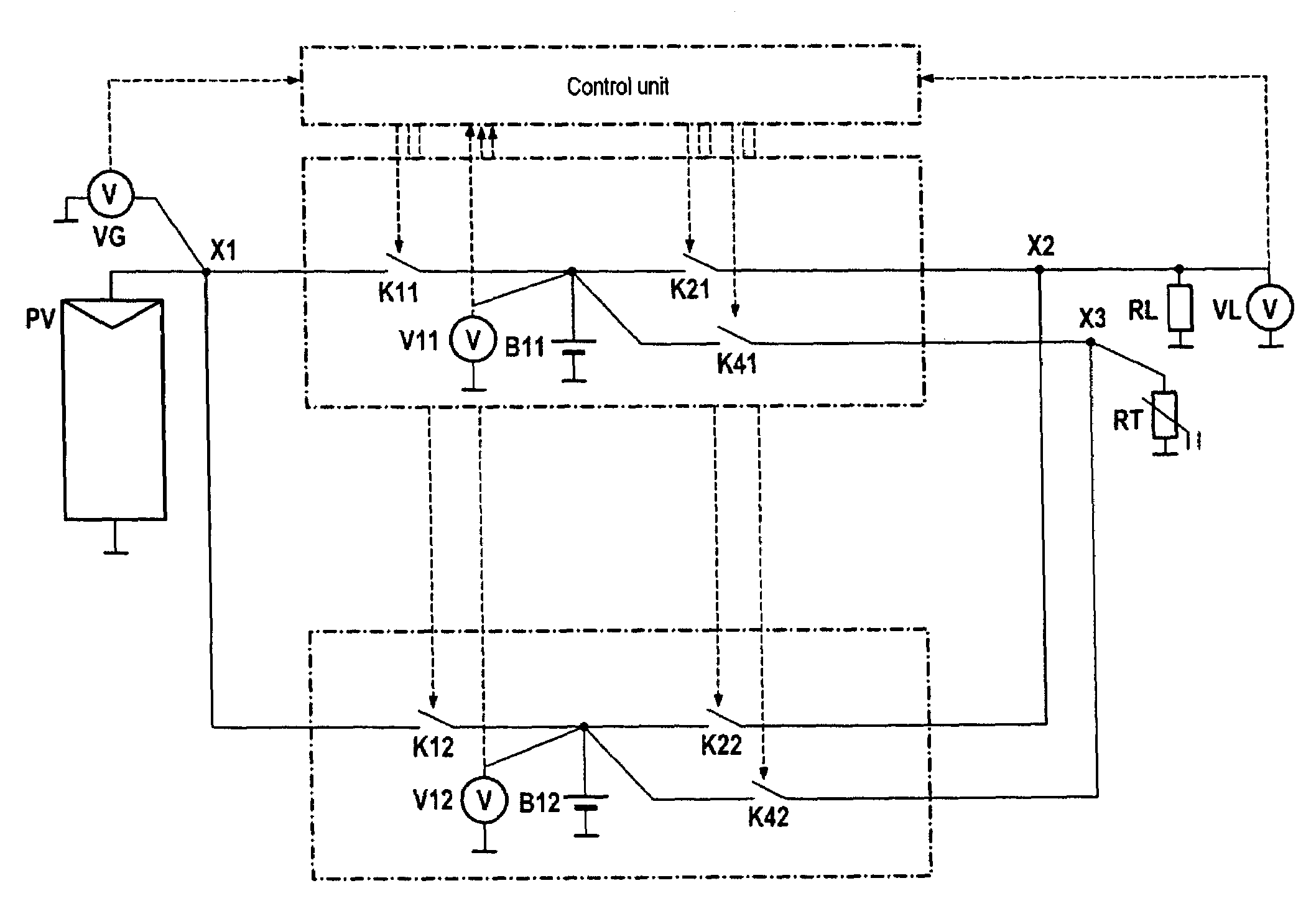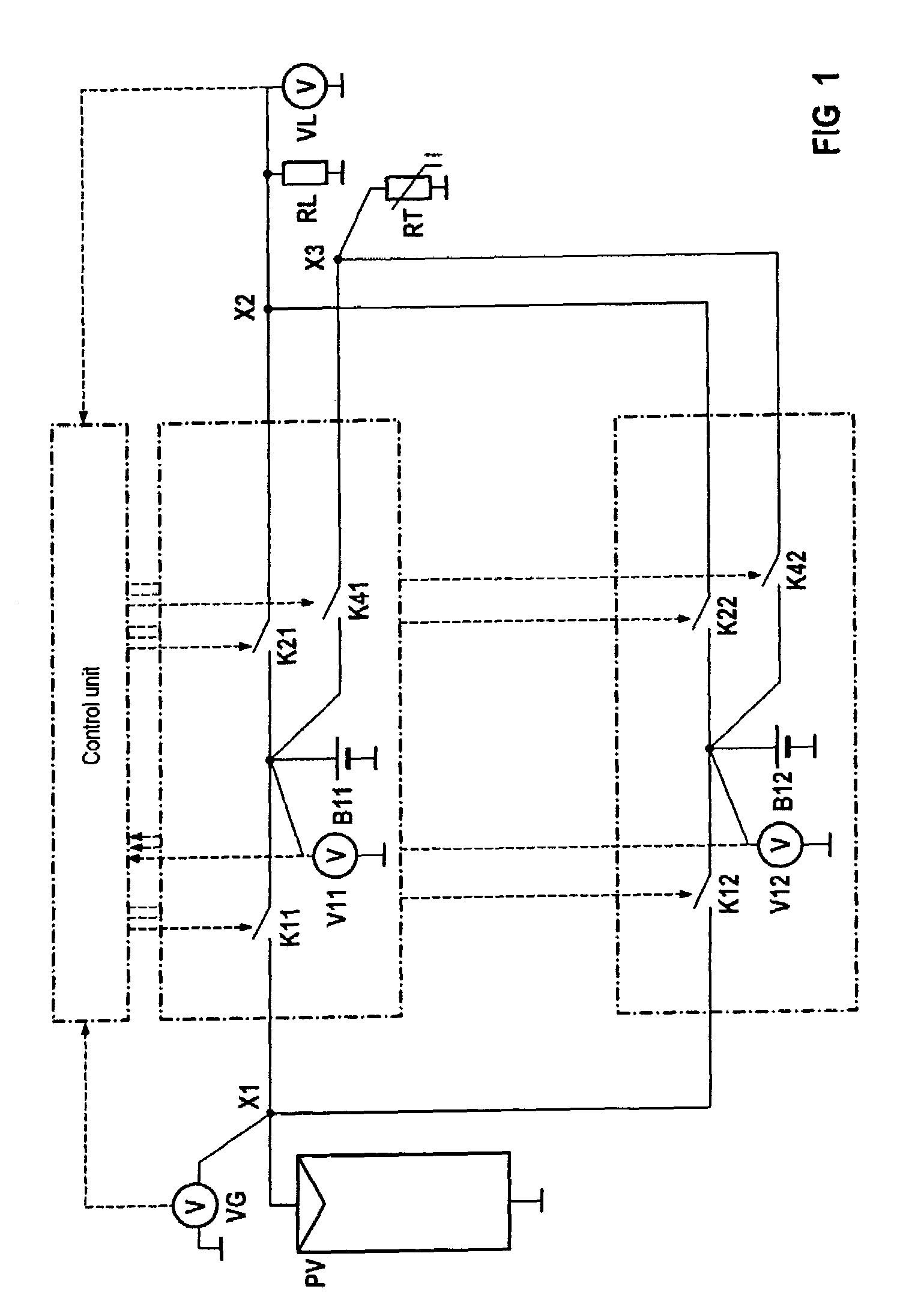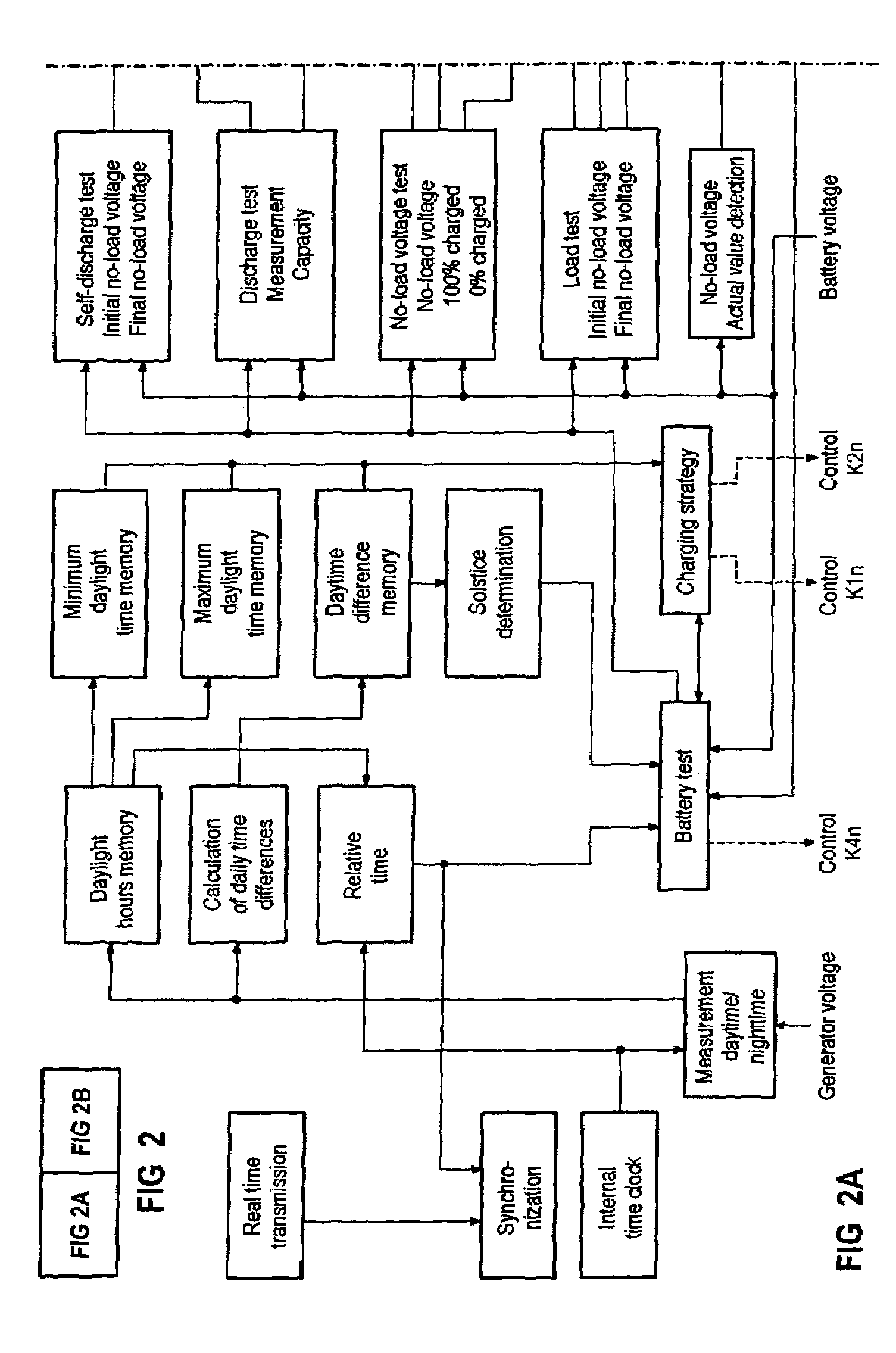Method for assessment of the state of batteries in battery-supported power supply systems
a technology for power supply systems and batteries, applied in the direction of instruments, material electrochemical variables, transportation and packaging, etc., can solve the problems of affecting the life of batteries, and requiring a high degree of maintenance effort in the procedure, so as to shorten the life of batteries and promote li
- Summary
- Abstract
- Description
- Claims
- Application Information
AI Technical Summary
Benefits of technology
Problems solved by technology
Method used
Image
Examples
Embodiment Construction
[0058]The exemplary embodiment relates to a power supply system having two parallel battery paths with the batteries B11 and B12, which are subjected to charging and discharge cycles in the long term and are recharged by a photovoltaic generator PV, with a respective voltage measurement device V11, V12 as well as a respective switch K41, K42 with a series-connected test resistor RT in each case being arranged parallel with each battery B11, B12. Each battery path has a respective generator switch K11, K12 and a respective load switch K21, K22 for connection to a load RL. At the generator end, the voltage can be determined by a voltage measurement device VG, and at the load end RL, it can be determined by a voltage measurement device VL.
[0059]According to the method, a test is carried out on the individual batteries B11, B12, or battery paths, removed from the power supply system. The method relates to an automated algorithm for determining parameters relating to the instantaneous st...
PUM
| Property | Measurement | Unit |
|---|---|---|
| time | aaaaa | aaaaa |
| temperatures | aaaaa | aaaaa |
| power | aaaaa | aaaaa |
Abstract
Description
Claims
Application Information
 Login to View More
Login to View More - R&D
- Intellectual Property
- Life Sciences
- Materials
- Tech Scout
- Unparalleled Data Quality
- Higher Quality Content
- 60% Fewer Hallucinations
Browse by: Latest US Patents, China's latest patents, Technical Efficacy Thesaurus, Application Domain, Technology Topic, Popular Technical Reports.
© 2025 PatSnap. All rights reserved.Legal|Privacy policy|Modern Slavery Act Transparency Statement|Sitemap|About US| Contact US: help@patsnap.com



